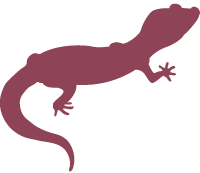 Endangered reptiles in Kyoto Prefecture
Endangered reptiles in Kyoto Prefecture
Kyoto Prefecture is home to 16 reptilian species from eight families and two orders, of which 15 species from eight families and two orders are native. One species is introduced. The Kyoto Prefecture Red Data Book lists 12 species of native reptiles, including no extinct, no critically endangered, no endangered, two vulnerable, and 10 near threatened & least concern species. Accordingly, 75% of all species in the prefecture are threatened.
The List of Biological and Geological Components of the Natural Environment of Kyoto Prefecture (Japanese)
Kyoto Prefecture Red List (Japanese)
Kyoto Prefecture Red List
| Extinct | Critically Endangered | Endangered | Vulnerable | Near Threatened & Least Concern | Sum | Total number of species in Kyoto | |
|---|---|---|---|---|---|---|---|
| Reptiles | 0 | 0 | 0 | 2 | 10 | 12 | 16 |
Typical endangered species
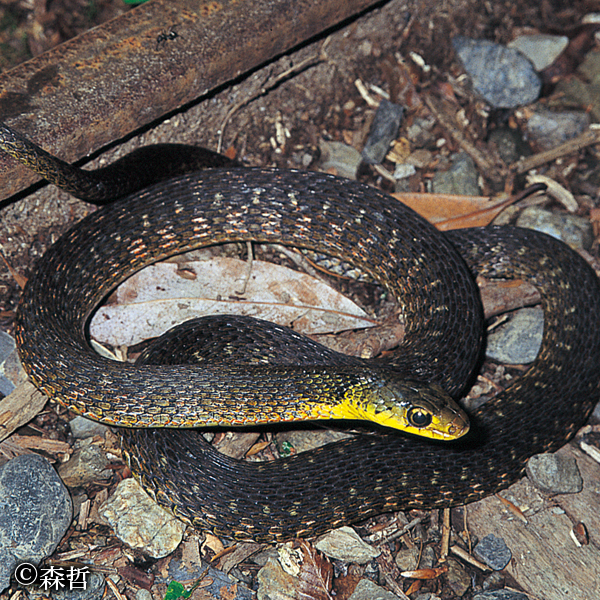
YAMAKAGASHI
Common Name(s)
Tiger keelback
Order
Squamata
Family
Colubridae
Scientific Name
Rhabdophis tigrinus
(boie, 1826)
Kyoto Prefecture Red List
Vulnerable
IUCN RED LIST
Outline
The color pattern of the tiger keelback is brown with black, yellow, and red spots. Tiger keelbacks have poison glands in their mouth and at their neck. They live near paddy fields and feed predominantly on frogs.
Endemic to Japan
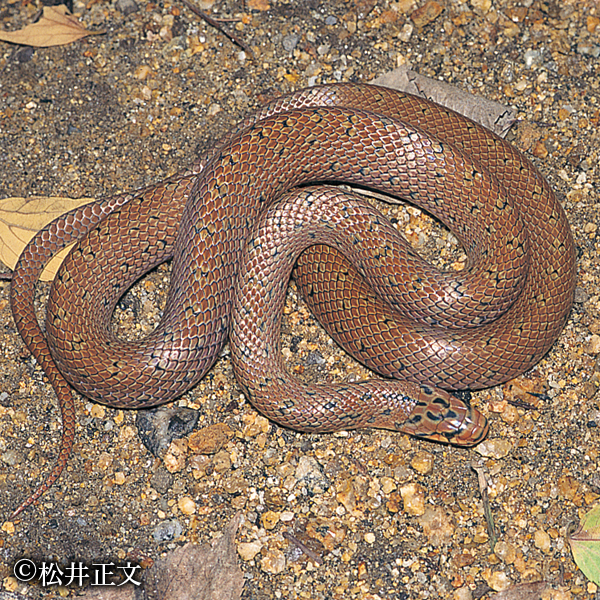
JIMUGURI
Common Name(s)
Japanese forest rat snake
Order
Squamata
Family
Colubridae
Scientific Name
Euprepiophis conspicillatus
(Boie, 1826)
Kyoto Prefecture Red List
Near Threatened & Least Concern
IUCN RED LIST
Outline
The total length of the Japanese forest rat snake is a little under 1 m. Their back color ranges from brown to reddish brown. Rectangular black spots scatter irregularly on their underside. Immature Japanese forest rat snakes have patterned dorsal surfaces.
Endemic to Japan
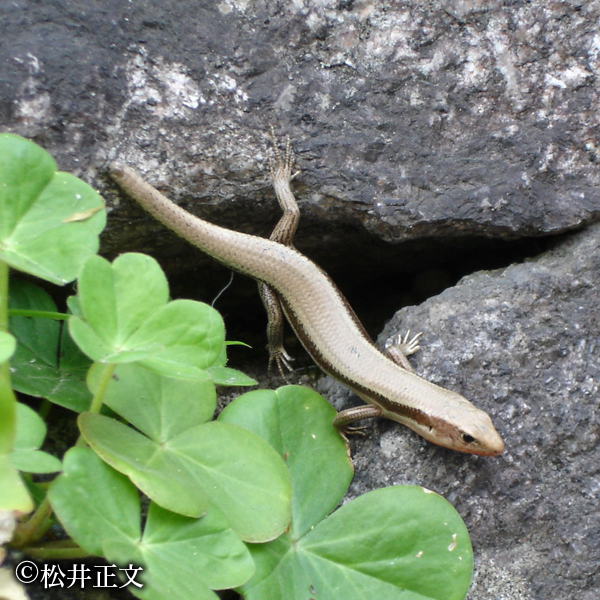
NIHONTOKAGE
Common Name(s)
Japanese five-lined skink
Order
Squamata
Family
Scincidae
Scientific Name
Plestiodon japonicus
(Peters, 1864)
Kyoto Prefecture Red List
Near Threatened & Least Concern
IUCN RED LIST
Outline
The total length of the Japanese lizard is approximately 200 mm. Immature Japanese five-lined skinks have a blue tail and stripes on the back. In adult form, their color is brown.
Endemic to Japan
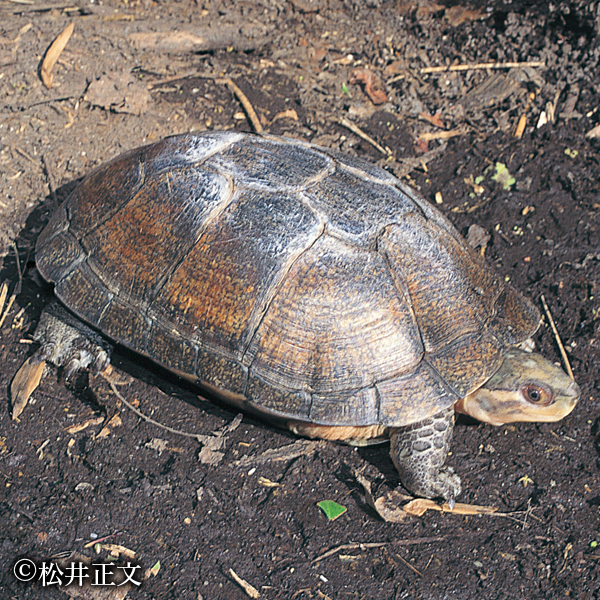
MINAMIISHIGAME
Common Name(s)
Yellow pond turtle
Order
Testudines
Family
Geoemydidae
Scientific Name
Mauremys mutica mutica
(Cantor, 1842)
Kyoto Prefecture Red List
Vulnerable
IUCN RED LIST
EN
Outline
The shell of the yellow pond turtle is 150 to 200 mm in length. In adult form, the upper shell of the yellow pond turtle does not have projections and has smooth edges. Male yellow pond turtles have a noticeably concave lower shell.
Natural Monument of Kyoto City
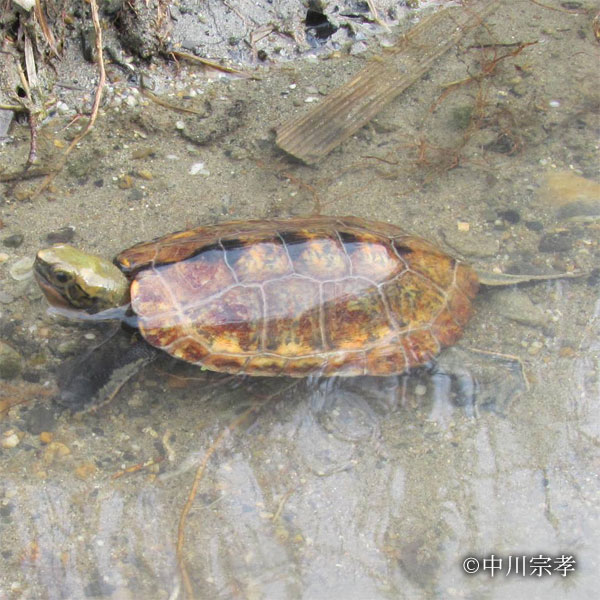
NIHONISHIGAME
Common Name(s)
Japanese pond turtle
Order
Testudines
Family
Geoemydidae
Scientific Name
Mauremys japonica
(Schlegel, 1857)
Kyoto Prefecture Red List
Near Threatened & Least Concern
IUCN RED LIST
NT
Outline
The shell of the Japanese pond turtle is 80 to 200 mm in length. The upper shell has notches at the rear. Japanese pond turtle habitat includes the upper and middle reaches of rivers, paddy fields, and ponds.
Endemic to Japan
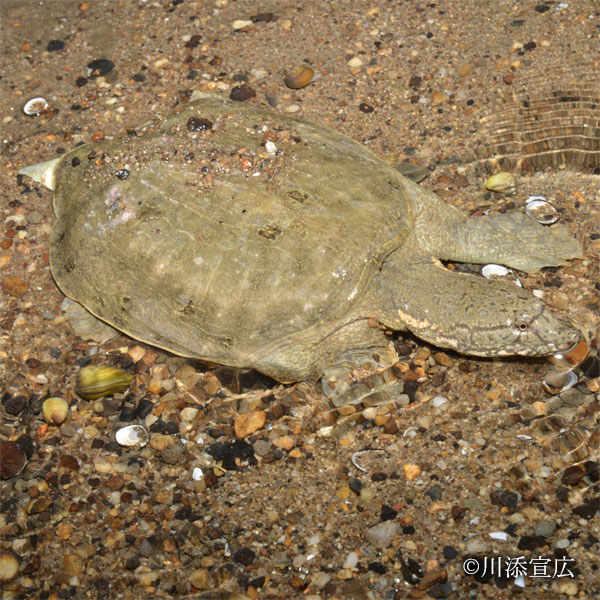
NIHONSUPPON
Common Name(s)
Chinese softshell turtle
Order
Testudines
Family
Trionychidae
Scientific Name
Pelodiscus sinensis
(Wiegmann, 1835)
Kyoto Prefecture Red List
Near Threatened & Least Concern
IUCN RED LIST
VU
Outline
Chinese softshell turtles are 200 to 350 mm in total length. The upper shell has no horny scales. They have well-developed webbing. They inhabit irrigation ditches and the middle and lower reaches of rivers.
Contact: Kyoto Prefecture Department of the Environment
Nature and Environmental Conservation Division
Tel 075-414-4706 FAX 075-414-4705
e-mail: [email protected]
〒602-8570 Yabunouchi-cho, Nishiiru, Shinmachi, Shimodachiuri-dori, Kamigyo-ku, Kyoto-shi
